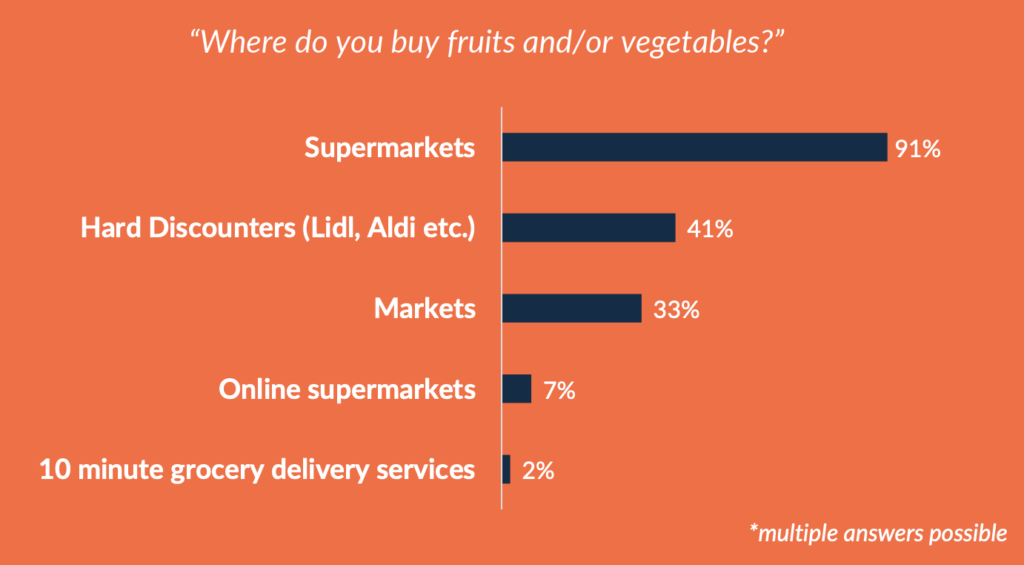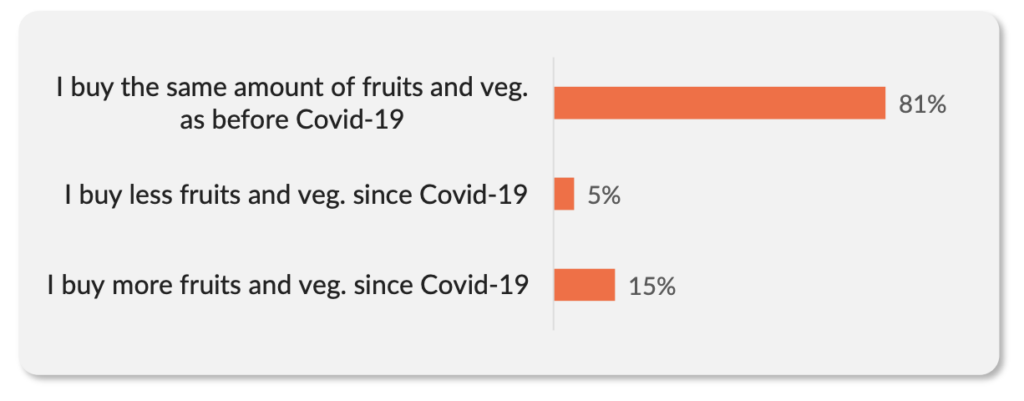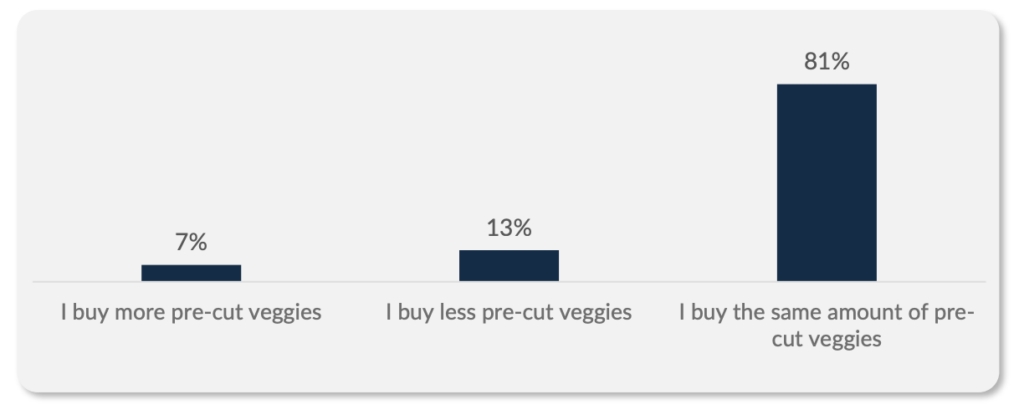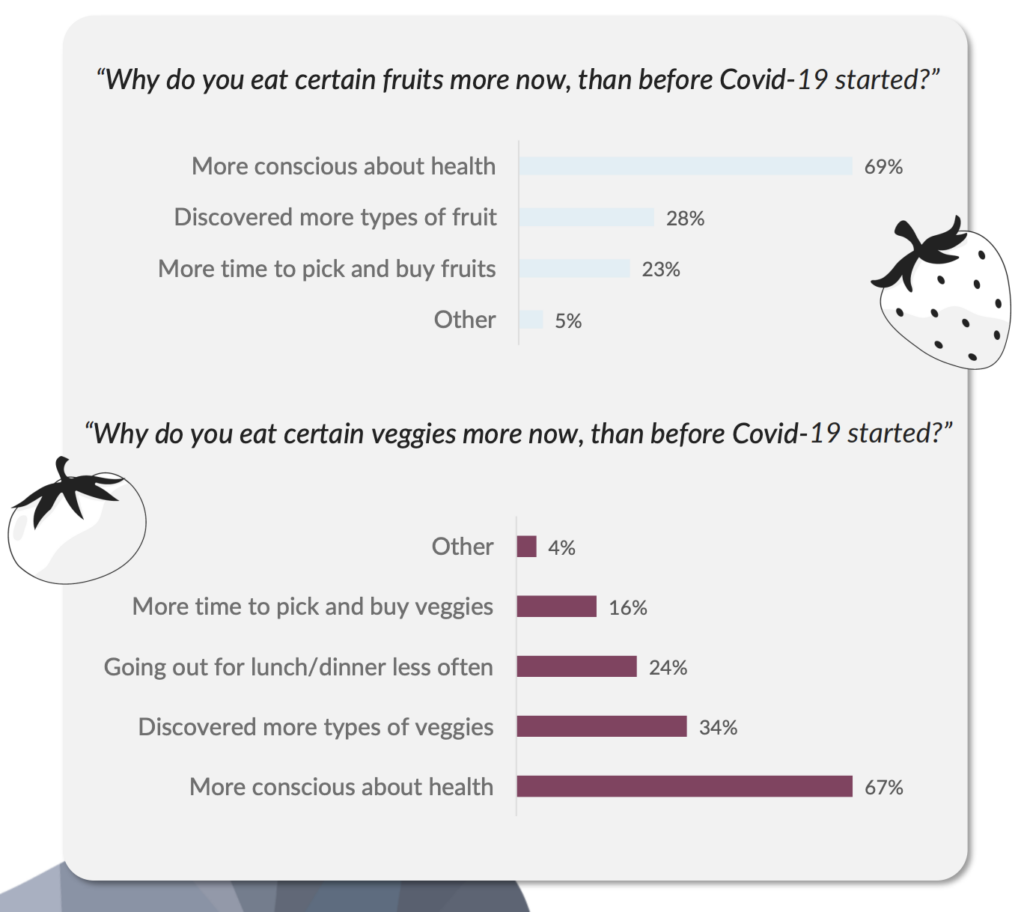Being highly fragmented with high volumes and low margins, the fresh produce market is both competitive and volatile. Getting insight into consumer preferences and buying behaviour enables optimization of the whole supply chain. Besides this, experts state the Covid-19 pandemic influenced
global food and vegetable consumption. Gaining insight into the more current fresh produce consumption behaviours could therefore be of extra importance and value. We have asked our European community of app-users about their fresh produce buying motives and intentions, providing you with insights on how the pandemic has potentially changed their fresh produce consumption behaviour.
Recap
- Most European consumers buy their fresh produce products at supermarkets and/or hard discounters.
- Half of European consumers choose for seasonal fresh produce products.
- Biologically and ecologically grown fruits and vegetables are most appreciated by German consumers, least by Dutch consumers.
- More than half of Spanish consumers find it important that fruits and vegetables are unprocessed.
- 15% of European consumers state to buy more fresh produce products since the Covid-19 pandemic started.
- 13% of European consumers state to buy fewer pre-cut vegetables since the Covid-19 pandemic started.
- Consciousness about health is, as to be expected, the main reason to buy more vegetables and fruit.
1. BUYING BEHAVIOUR – OFFLINE STILL POPULAR
For most European consumers, supermarkets (91%), and/or hard discounters (41%), are their go to
address to buy fruits and vegetables. Despite the Covid19 pandemic, delivery services are not used much for buying fresh produce (9%). Most Europeans buy their fruit and vegetables weekly (44%), or even every few days (38%).
Spending a weekly average of €1 to €10 (28%) or €11 to €20 euros (45%), the most bought vegetable
categories are root (potato, sweet potato, yam) (74%), and leafy green (lettuce, spinach, silver beet)
(68%). When it comes to fruit, apples and pears (71%), and tropical and exotic fruits (bananas, mangoes) (68%) are the most bought categories.

2. BUYING MOTIVES – HOW DECISIONS ARE MADE
Spanish (75%) and French (54%) consumers tend to buy most seasonal fruits and vegetables, compared to other European countries.
“Promotion” as a buying motive for fresh produce is especially important in the UK (48%), and Spain (46%). In France (35%) and Belgium (36%) it is least important.
“I often choose for certain fruits/vegetables because they are on promotion.” – 41%
“I often choose for seasonal fruits and vegetables.” – 51%
Offering biologically grown fruits and vegetables seems to be most relevant in Germany, where 25%
of consumers find this important. Dutch consumers, however, find it least important (8%).
40% of French consumers often choose their fresh produce products based on the country
of origin. Dutch are least interested in the country of origin when it comes to fruit and vegetables (11%).
More than half of Spanish consumers find it important that fruits and vegetables are unprocessed (59%),
while in The Netherlands (23%) and Belgium (25%) only a quarter of consumers agree.
Besides biologically grown products, German consumers also value ecologically grown fruits and
vegetables most (29%). Again, for Dutch consumers, this is least important (7%).
3. INFLUENCE OF COVID-19
Given the rise of health consciousness, it would be a logical assumption that consumers are buying more fruits and vegetables since Covid-19 started. Our results show that 15% of European consumers state to buy more fresh produce products since the start of the pandemic.

A second assumption as a result of Covid-19 would be that consumers buy fewer pre-cut vegetables, as they have more time for cooking. Our results show that 13% of Europeans state to buy fewer pre-cut vegetables since Covid-19. However, 7% of Europeans buy even more.

What are the reasons to buy more fresh produce?
Consciousness about health is, as expected, the main reason to buy more vegetables (67%) and fruit (69%) since the pandemic started. A second interesting reason for buying more fresh produce is that consumers discovered more types of fruits and vegetables during Covid-19, finding out to like them and to start eating them more (31%). Going out for lunch/diner less (24%), and having more time to buy fruits and vegetables (19%) are important reasons for the increase in fresh produce consumption as well.

The findings presented in this report are based on the results of an investigative task submitted to the Roamler community during one month (March 2022). The purpose was to determine the crowd’s preferences when it comes to buying fresh produce products. The findings reflect data collected from 3.475 respondents, located in France, Spain, the United Kingdom, Germany, Belgium, and the Netherlands.